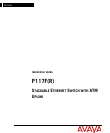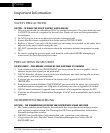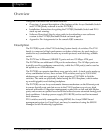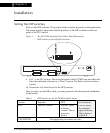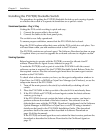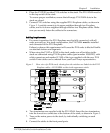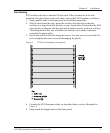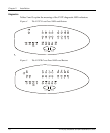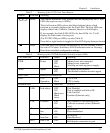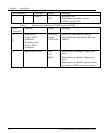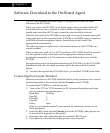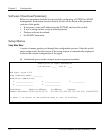
Chapter 1
Overview
This guide is divided into four main sections:
• Overview: A general description of the features of the Avaya Stackable Switch
and P117FR (jointly referred to as the P117F(R)).
• Installation: Instructions for getting the P117F(R) Stackable Switch and P110
stack up and running.
• Software Download: Step-by-step guide to downloading a new software
version to the P117F(R) Stackable Switch on-board agent
• Appendix: Pin Assignments for the console RJ45 connector.
Description
The P117F(R) is part of the P110 Switching System family of switches. The P110
family is composed of high-performance switches which may be used singly or
stacked in any combination to make up a multi-protocol, non-blocking, scalable
switch.
The P117F has 16 Ethernet (10BASE-T) ports and one 155 Mbps ATM port.
The P117FR has an additional ATM port for redundancy. The 10 Mbps ports are
typically used for workgroup connectivity, while the ATM port(s) can be used as
an uplink to an ATM backbone.
The P117F(R) can operate standalone or as part of a stack. A stack can be made up
of any combination of two, three or four P110 switches, and up to 32,000 MAC
addresses per stack are supported. A stack requires a P110 NMA to link the
switches. The units are physically linked using the P110 Exoplane, which makes
up a multi-gigabit, non-blocking backplane.
The P117F(R) can use Avaya automatic fairness mechanism on the Ethernet ports
to ensure that all ports gain fair access to the P110 Exoplane even at very high
network utilization. Congestion management works both on full and half duplex
ports, and ensures no packet loss should the buffers become saturated during peak
load conditions. A backup power supply (P110 BUPS) can be used for increased
fault tolerance.
P110 switches are fully manageable using MSNM, the Avaya SNMP-based
management system (or CajunView), and may be monitored using the SMON
Manager Switch Monitoring Application.
P117F(R) Stackable Switch Installation Guide 3



